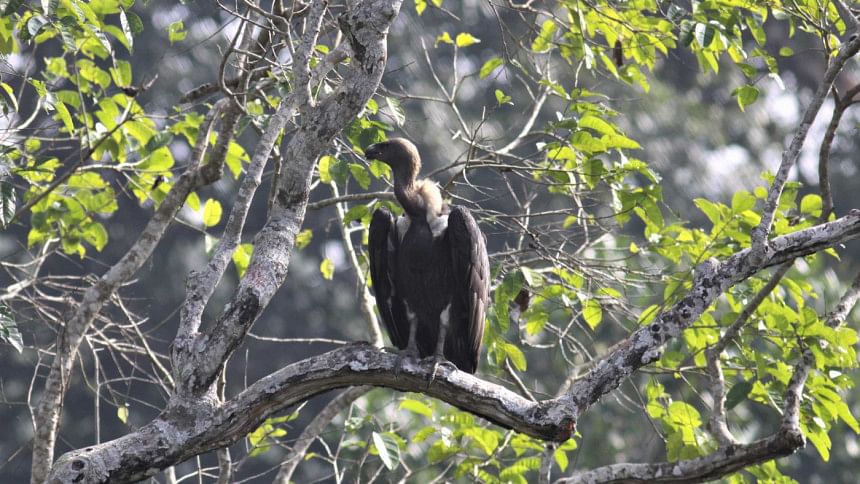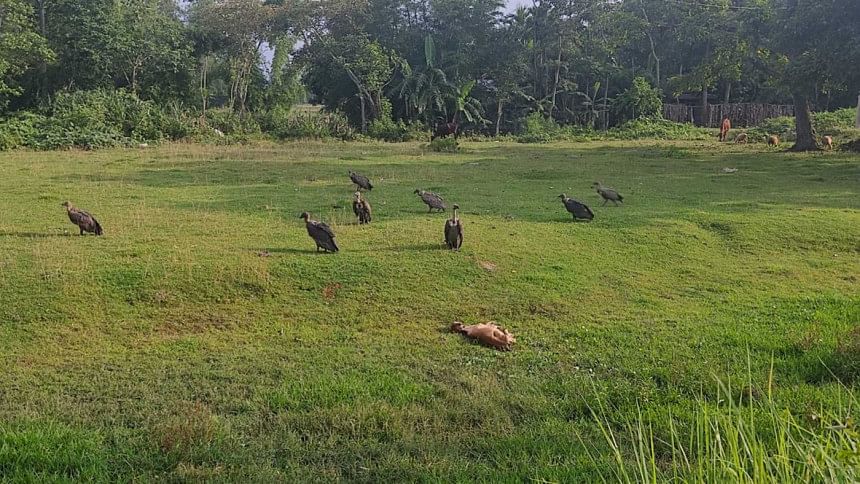International Vulture Awareness Day: The silent decline of ‘nature’s cleaners’

Around three decades back, flocks of vultures were a common sight across the country. These vultures, known as nature's "cleaners", would gather around dead cattle left in open fields, swiftly removing the bodies and sanitising the area.
However, the environment that once supported such gatherings has disappeared.
Over the past three decades, vulture populations have declined sharply. Deforestation has removed their habitat, and there is a significant food shortage. Additionally, painkillers like diclofenac and titofenac, used to treat sick domestic animals, leave harmful residues in the carcasses, leading to vulture deaths when they consume these contaminated bodies.

The International Union for Conservation of Nature (IUCN) has listed vultures as critically endangered.
Today is International Vulture Awareness Day. It is observed on the first Saturday of September each year to highlight the plight of these birds.
The Forest Department data shows the vulture population was 1,972 in 2008. By the 2015 census, the number had plummeted to 260. Of these, around 100 vultures are found in the greater Sylhet region, and 70 to 80 are in Rema-Kalenga National Park in Habiganj.
According to the Wildlife Management and Nature Conservation Division, vultures are unique in their ability to consume and digest dead animals, including those that are still fresh. Their feeding process helps quickly deodorise the environment and they possess the ability to digest various pathogens, including anthrax.
In Atgaon, adjacent to Dighirpar Bazar in Amtoil Union in Moulvibazar Sadar Upazila, vultures are frequently seen in a fallow area. When dead cows and goats are discarded there, flocks of vultures gather to feed. On July 23, a group of 40 vultures was observed in this area, said Nazrul islam, a resident of Atgaon village.
Mirza Mehdi Sarwar, wildlife and biodiversity conservation officer of the Forest Department, confirmed that vultures only visit Atgaon when dead cows are disposed of in the area.
Shibli Sadik, an ornithologist at the forest department's wildlife rehabilitation facility, said, in 2015 the vulture population was 260, but it has now decreased to 245. This decline is primarily due to the death of 26 vultures in Moulvibazar, compounded by the continued use of harmful painkillers like diclofenac and titofenac, he said.
The vulture population in Rema-Kalenga Forest has also declined. In 2023, it was reported that 14 vultures died in Moulvibazar, but in reality, 26 vultures perished. Vultures from Rema-Kalenga Forest used to travel to Moulvibazar to feed, and a satellite-tagged vulture from Rema-Kalenga confirmed this migration pattern.
The number of vulture nests in Rema-Kalenga Forest last year was lower than in 2014-15.
The main factor contributing to the decline in vulture numbers is the lack of safe food sources. Funding for vulture conservation by IUCN is very limited and misallocated. There has been no funding for vulture conservation since 2023, and the funds available in 2022-23 were insufficient.
The vulture known as Bangla vulture, associated with the Bengali name, has not received ongoing support. Continuous funding is essential for the conservation of this critically endangered species, but no significant conservation efforts have been undertaken since 2015, and the situation remains unchanged, Sadik added.

 For all latest news, follow The Daily Star's Google News channel.
For all latest news, follow The Daily Star's Google News channel. 



Comments